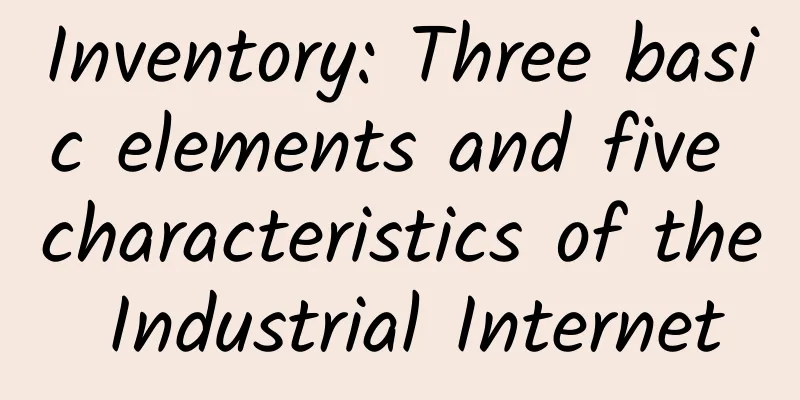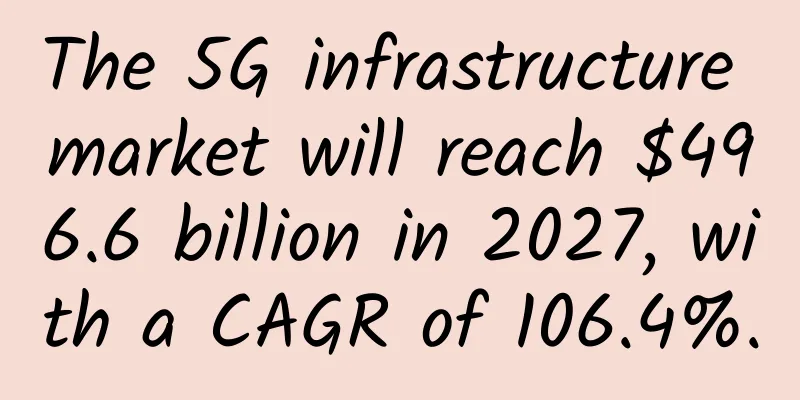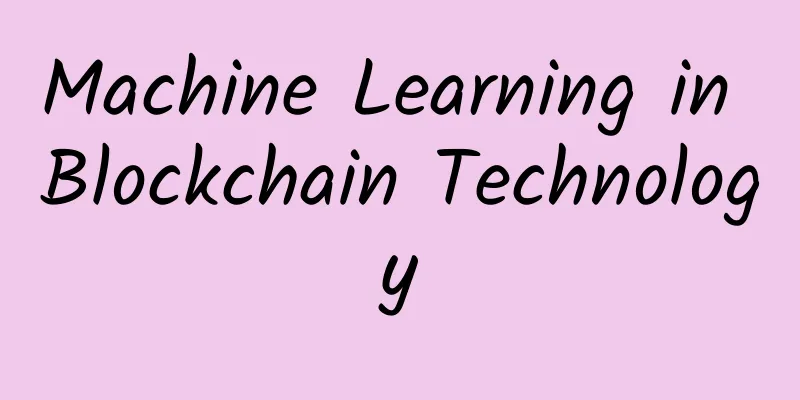Inventory: Three basic elements and five characteristics of the Industrial Internet

|
Three basic elements of the Industrial Internet
The key driving force for the development of the Industrial Internet We need to work tirelessly to promote technological innovation while increasing investment in the necessary sensors, test equipment and user interface systems. Investment will become a basic condition for accelerating technology transformation. The extent to which the Industrial Internet can improve efficiency and bring convenience will depend on its development pace. The cost of deploying the Industrial Internet will vary by industry and region. However, it is generally believed that the investment in this technology field will eventually have a positive return on its cost. A strong cybersecurity system, an effective way to manage vulnerable links, and protect sensitive information and intellectual property. Establish a large talent pool, including new cross-disciplinary talents, such as the combination of mechanical and industrial engineering to form a new "digital mechanical engineer", data experts who create analytical platforms and algorithms, and software and cybersecurity experts. Training employees to master the corresponding skills will help ensure innovation, create more jobs, and promote productivity development. The Industrial Internet is a project that requires human and material resources, but it will completely change our industrial development and lifestyle, and promote the interaction and integration of the human brain and machines. Five characteristics of the Industrial Internet 1. Characteristics of industrial data Traditional industrial enterprise data is not only fragmented between enterprises, but also in the production, design, R&D, management, and operation of the same enterprise. The so-called Industrial Internet is based on various network interconnection technologies, connecting the entire life cycle of enterprises from creation to end, including industrial design, technology, production, management, and services. It will empower the entire industrial system to have intelligent functions of description, diagnosis, prediction, decision-making, and control. 2. Industrial analysis capabilities have changed The traditional "end-pipe-cloud" model is difficult to cope with the growing number of industrial IoT terminals and cannot guarantee the real-time and reliability of industrial production control. The future industrial analysis capability will be "cloud computing + edge computing". Cloud computing focuses on big data analysis of non-real-time, long-cycle data to support periodic maintenance and business decision-making, while edge computing focuses on real-time, short-cycle data analysis to support real-time intelligent processing and execution of local business. 3. Changes in industrial value Based on industrial data, the profit point of industrial equipment manufacturers will shift from "mainly focusing on product sales, repair and maintenance" to "mainly focusing on providing multi-dimensional productive services based on data." 4. Changes in Product Lifecycle Management Based on the industrial data obtained by industrial Internet technology, digital twin technology has become a development focus. In the future, products from R&D, production to use will transform from traditional product life cycle management to digital twin application scenarios, realize the virtual world image of the product's entire life cycle, and improve the full life cycle management capabilities. 5. Changes in product supply chain Traditional supply chain management is limited to process-related connections and lacks the overall value transfer and value-added services brought by data-driven, resulting in bottlenecks such as reduced profit margins of homogeneous enterprises, low efficiency of supply chain collaboration, core business processes being restricted by functional management, and poor information sharing. The Industrial Internet can realize the collection and management of real-time product data, achieve accurate matching between supply and demand based on real-time data, and realize effective dynamic control of the supply chain. With the attention of the state and enterprises, in 2017, the State Council officially issued the "Guiding Opinions on Deepening the Development of Industrial Internet through "Internet + Advanced Manufacturing", proposing to enhance the supply capacity of the industrial Internet industry, continuously improve the development level of my country's industrial Internet, and further promote "Internet +", forming a good pattern of mutual promotion and synchronous improvement between the real economy and the network. In the future, my country's industrial Internet of Things process will continue to accelerate. |
<<: How fast is 6G? You really should know in advance
Recommend
Understand the Ping command in one article: the "Swiss Army Knife" of the Internet world, allowing you to control it easily!
In our daily digital life, network connections ar...
Cutover failure leads to major communication failure
[[429302]] Japan has once again experienced a maj...
H3C: Using Converged Network Technology to Support Digital Transformation of All-Scenario Services in Smart Hospitals
Hospitals are the core of protecting the health a...
Five hot and four cooling trends in infrastructure and operations
The IT world is constantly changing, with new too...
5 exciting 5G use cases
As the fifth generation of wireless technology, 5...
What are the big opportunities after NB-IOT in the field of Internet of Things?
With the freezing of the R3 core standard of NB-I...
5G! Your future is unimaginable
Nowadays, 5G seems to be like the swallows flying...
Analysis of the development pattern of domestic and foreign optical communication markets
1. Distribution of the global optical communicati...
Why is the 400-MHz spectrum ideal for critical communications?
The 400 MHz spectrum, with its long range, excell...
Huawei Software Development Cloud helps improve WeChat mini-program code quality
In the early morning of January 9, after more tha...
Ruijie Networks launches a new solution for Ethernet all-optical network construction to tailor campus networks for multiple industries
In recent years, the trend of "optical fiber...
Point2 launches 5G RangeXtender to increase network fronthaul and backhaul range
Point2 Technology said its 5G RangeXtender allows...
TMThosting: Seattle high-security VPS with 20% off for monthly payment, 30% off for annual payment, China Unicom CUVIP line, Alipay support
It has been a while since I shared information ab...
5G bearer network operation is difficult, but machine learning technology can solve it
5G commercialization is getting closer and closer...
HostYun: US CN2 GIA line KVM monthly payment starts from 12 yuan, South Korea CN2 line KVM monthly payment starts from 15.9 yuan
HostYun (Host Cloud) was formerly known as hostsh...









